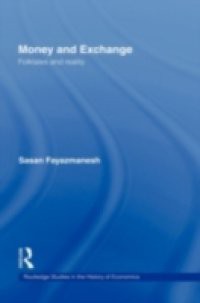Whether a theoretical system is realistic or not has been a concern in economics, particularly in monetary theory, over the past century. Following John R. Hicks' proposal that a realistic monetary theory could be constructed along an evolutionary path, starting with the workings of a real market, this volume considers whether we can look to the medieval economy as the point of departure. Drawing upon the work of Aristotle, scholastic economists, Adam Smith, Karl Marx, William Stanley Jevons, Leon Walras and many modern monetary theorists, this intriguing book provides a critical analysis of some basic theories of monetary analysis. Concentrating primarily on certain fundamental building blocks it covers: the theory and mathematical properties of barter and monetary relations the distinction between barter and monetary relations and money and non-money commodities the concept of exchange as an equation, and the notion of the exchange relation as a relation of equality. This groundbreaking study dispels some of the old myths and conjectures concerning money and exchange and opens up the way for the development of new approaches, both realistic and evolutionary, of interest to researchers and students of the history of monetary theory and economic thought.

